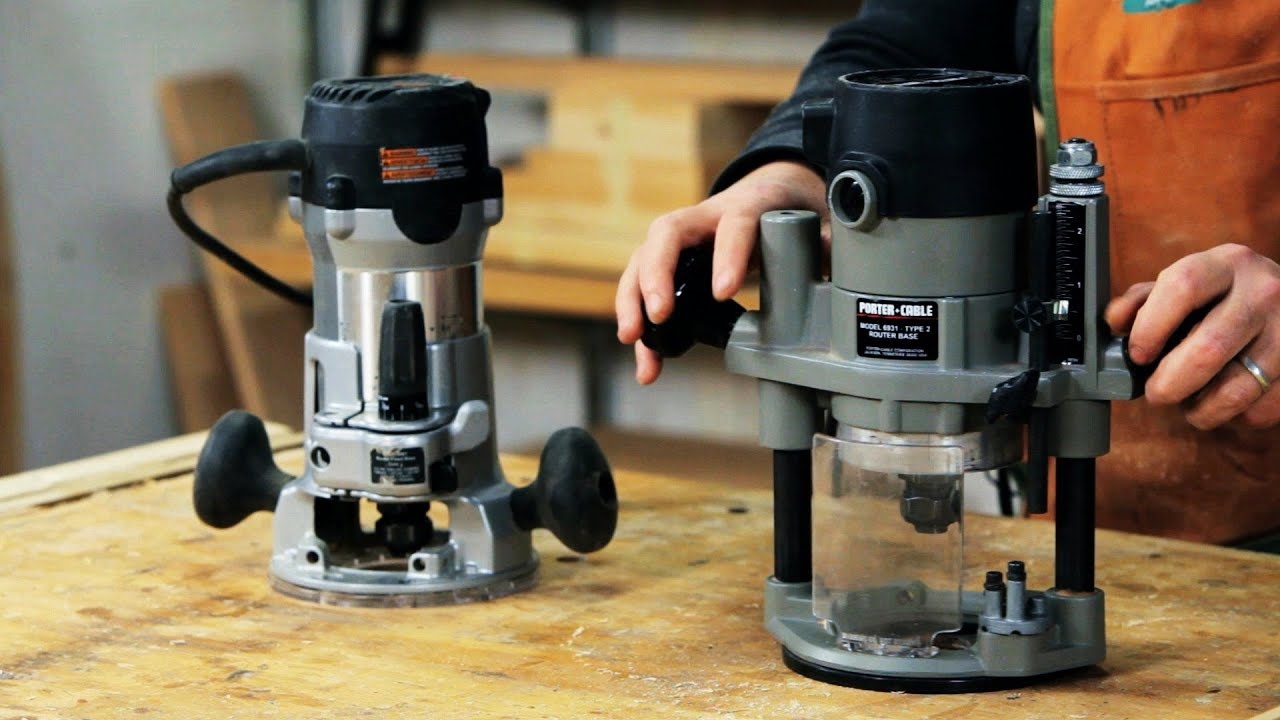

Articles
What Woodworking Router Should I Buy
Modified: August 28, 2024
Looking for expert advice? Read our articles on woodworking routers to find out which router is best for your woodworking projects.
(Many of the links in this article redirect to a specific reviewed product. Your purchase of these products through affiliate links helps to generate commission for Storables.com, at no extra cost. Learn more)
Introduction
When it comes to woodworking, having the right tools is essential. One tool that every woodworker should have in their arsenal is a woodworking router. A router is a versatile and powerful tool that can be used for a variety of tasks, such as cutting, shaping, and joining wood. However, with so many different routers on the market, choosing the right one can be a daunting task.
In this article, we will explore the factors to consider when buying a woodworking router. Whether you are a seasoned woodworker or a beginner looking to invest in your first router, understanding these factors will help you make an informed decision and choose a router that best suits your needs.
So, what are the key factors to consider when buying a woodworking router? Let’s dive in!
Key Takeaways:
- When buying a woodworking router, consider factors such as router type, power and speed, motor size, base plate and handles, bit compatibility, dust collection, price range, and brand reputation. These factors ensure you make an informed decision that aligns with your woodworking needs and preferences.
- Understanding the different types of woodworking routers, their advantages, and common uses, such as fixed-base routers for precision, plunge routers for versatility, and combination routers for flexibility, empowers you to choose the right tool for your specific woodworking projects, ensuring precision and efficiency.
Read more: What Hand Tools Should I Buy
Factors to Consider When Buying a Woodworking Router
When you’re in the market for a woodworking router, there are several important factors to consider before making your purchase. These factors will help guide you in choosing a router that meets your specific needs and preferences. Let’s take a closer look at each of these factors:
- Router Type: There are three main types of woodworking routers to choose from: fixed-base routers, plunge routers, and combination routers. Each type has its own set of advantages and disadvantages. Fixed-base routers are great for tasks that require precision and stability, while plunge routers are ideal for tasks that require depth adjustments and versatility. Combination routers offer the best of both worlds, allowing you to switch between fixed-base and plunge functions.
- Router Power and Speed: The power and speed of a router are important factors to consider, as they determine the performance and efficiency of the tool. Higher horsepower routers are generally more powerful and can handle larger bits and tougher materials. Additionally, routers with variable speed control give you the flexibility to adjust the speed based on the task at hand.
- Router Motor Size: The motor size of a router is directly related to its power and performance. Routers with larger motors tend to be more powerful and suitable for heavy-duty tasks. Smaller motors are better suited for lighter tasks and beginners who may not require as much power.
- Base Plate and Handles: The base plate is an important component of a router, as it provides stability and support. Look for a router with a sturdy and flat base plate that can be easily adjusted. Additionally, ergonomic handles are essential for comfort and control during operation.
- Router Bit Compatibility: Consider the compatibility of the router with different types and sizes of router bits. Look for routers with a standard collet size, which allows for versatile use of a wide range of router bits.
- Dust Collection: Woodworking can generate a significant amount of dust, which can be both messy and harmful to your health. Look for routers with built-in dust collection systems or the ability to attach an external dust extractor. This will help keep your workspace clean and minimize the amount of dust in the air.
- Price Range and Budget: Set a budget for your router purchase and consider the price range of different models. While it’s tempting to go for the cheapest option, it’s important to find a balance between cost and quality. Investing in a router that is durable and reliable will save you money in the long run.
- Brand Recommendations: Research different brands and read reviews from other woodworkers to get an idea of the quality and reputation of different router brands. Some popular and well-respected brands in the woodworking industry include Bosch, Makita, Dewalt, and Festool.
By considering these factors when buying a woodworking router, you can ensure that you make a well-informed decision and choose a router that will meet your woodworking needs for years to come.
Types of Woodworking Routers
Woodworking routers come in various types, each designed for specific tasks and applications. Understanding the different types of routers will help you choose the one that best suits your woodworking needs. Let’s take a closer look at the three main types of woodworking routers:
- Fixed-Base Routers: As the name suggests, fixed-base routers have a fixed base that is attached to the router motor. These routers are commonly used for tasks that require precise and controlled cuts, such as edge trimming, dado cutting, and decorative routing. Fixed-base routers are known for their stability and accuracy, making them a popular choice among woodworkers who require precision in their work.
- Plunge Routers: Plunge routers, on the other hand, have a base that moves up and down on a turret, allowing for depth adjustments during operation. This type of router is ideal for tasks that require starting the cut in the middle of the material, such as creating grooves, mortises, and fluting. Plunge routers offer versatility and the ability to make plunge cuts without the need for pre-drilling, making them a valuable tool in any woodworker’s workshop.
- Combination Routers: Combination routers, as the name implies, combine the features of both fixed-base and plunge routers in a single tool. These routers allow you to switch between the fixed-base and plunge functions, providing flexibility and convenience. Combination routers are perfect for woodworkers who need the versatility of a plunge router along with the precision of a fixed-base router. They are suitable for a wide range of woodworking tasks and are a popular choice for many professionals.
When choosing a woodworking router, consider the type of tasks you plan to undertake and the level of precision and versatility you require. Fixed-base routers are excellent for precise cuts, while plunge routers are ideal for tasks that require depth adjustments. If you need the best of both worlds, a combination router might be the perfect choice.
Additionally, it’s worth mentioning that some routers on the market are hybrid models that offer additional features, such as router tables or interchangeable bases. These hybrid models can be a great option for woodworkers who want the benefits of multiple types of routers in a single tool.
Overall, understanding the different types of woodworking routers will help you choose the right tool for your specific woodworking projects, ensuring that you can achieve the desired results with precision and efficiency.
Fixed-Base Routers
Fixed-base routers are a popular choice among woodworkers who need precise and controlled cuts. These routers feature a fixed base that is attached to the motor, providing stability and accuracy during operation. Let’s explore the advantages and common uses of fixed-base routers:
- Precision: The main advantage of fixed-base routers is their ability to deliver precise cuts. The fixed base ensures that the router bit remains at a consistent depth, resulting in clean and accurate cuts. This makes fixed-base routers ideal for tasks that require tight tolerances and intricate details, such as edge trimming, inlay work, and decorative routing.
- Stability: Due to their fixed base, these routers offer excellent stability during operation. The base acts as a solid foundation, reducing vibration and allowing for precise control over the tool. This stability is especially beneficial when working with small or delicate pieces of wood, as it minimizes the risk of accidents or mistakes.
- Easy to Use: Fixed-base routers are generally easy to use, making them suitable for woodworkers of all skill levels. They are often equipped with ergonomic handles and simple depth adjustment mechanisms, making them comfortable to hold and operate. The straightforward design of fixed-base routers allows for quick setup and intuitive use, making them a reliable choice for both beginners and experienced woodworkers.
- Common Uses: Fixed-base routers are commonly used for a variety of woodworking tasks. They are excellent for edge profiling and trimming, as they can create precise, clean edges with ease. Additionally, fixed-base routers are often used for creating dadoes and rabbets, as well as routing grooves and fluting. Whether you are working on furniture, cabinets, or other woodworking projects, a fixed-base router can be a valuable tool in your workshop.
When choosing a fixed-base router, consider the power and speed options, as well as the availability of compatible router bits. Higher horsepower routers are better suited for heavy-duty tasks and dense materials, while routers with variable speed control offer flexibility for different types of cuts. It’s also worth investing in quality router bits that are specifically designed for the tasks you plan to undertake.
Overall, fixed-base routers are a reliable and versatile tool for precision routing. Their stability and accuracy make them an essential choice for woodworkers who demand consistent and flawless results. By incorporating a fixed-base router into your woodworking arsenal, you can enhance the quality and intricacy of your projects.
Plunge Routers
Plunge routers are a versatile type of woodworking router that offer the ability to make plunge cuts and adjust the cutting depth on the fly. These routers are widely used for various tasks that require starting the cut in the middle of the material, such as creating grooves, mortises, and fluting. Let’s explore the advantages and common uses of plunge routers:
- Depth Adjustability: The main advantage of plunge routers is their ability to make precise depth adjustments during operation. With a plunge router, you can set the desired cutting depth and then lower the bit into the material. This feature allows for plunge cuts, where the bit is lowered into the material and then moved in a controlled manner to create the desired cut. The depth adjustability makes plunge routers perfect for tasks that require consistent and accurate cutting depths.
- Versatility: Plunge routers offer versatility in woodworking projects. They allow you to create grooves, mortises, and dadoes with ease, as well as perform tasks like inlaying and pattern routing. The ability to start the cut in the middle of the material gives you greater flexibility in design and allows for more intricate and creative woodworking projects. Plunge routers are commonly used by woodworkers who require versatility and the ability to make complex cuts.
- Ease of Use: Despite their advanced capabilities, plunge routers are generally easy to use. They often feature ergonomic handles and smooth plunge mechanisms, making them comfortable and user-friendly. The plunge action can be controlled to ensure precision and avoid any sudden movements during the cut. Many plunge routers also have micro-adjustment features, allowing for fine-tuning of the cutting depth.
- Common Uses: Plunge routers are commonly used in tasks that involve creating recesses, grooves, and intricate cuts. They are ideal for making mortises, where a cavity is created for joining pieces of wood together, such as in traditional joinery. Plunge routers are also commonly used for creating flutes or channels in woodworking projects, as well as for creating precise inlays and decorative patterns. The ability to start the cut at any point in the material makes plunge routers suitable for a wide range of woodworking applications.
When choosing a plunge router, consider the power and speed options, as well as the overall build quality and stability of the tool. Look for models with smooth plunge mechanisms, comfortable handles, and easy-to-read depth scales for precise depth adjustments. Additionally, ensure that the plunge router is compatible with an array of router bits, allowing you to tackle different woodworking tasks with ease.
Overall, plunge routers are a valuable addition to any woodworking workshop, offering versatility and the ability to make precise and controlled cuts. With a plunge router, you can take your woodworking projects to the next level and bring your creative ideas to life.</p
Read more: What Mattress Should I Buy Reddit
Combination Routers
Combination routers, as the name suggests, combine the features of both fixed-base and plunge routers into a single tool. These routers offer the best of both worlds, providing the versatility of a plunge router along with the precision of a fixed-base router. Let’s explore the advantages and common uses of combination routers:
- Switchable Bases: One of the key advantages of combination routers is their ability to switch between fixed-base and plunge functions. This versatility allows woodworkers to handle a wide range of tasks without needing to invest in two separate routers. By simply swapping the base, you can switch from precise edge trimming with a fixed-base to making plunge cuts for mortises or creating grooves with ease.
- Flexibility: Combination routers provide flexibility in terms of both depth adjustment and cutting techniques. With the plunge function, you can easily adjust the routing depth while in operation, allowing for intricate and precise cuts. On the other hand, the fixed-base function offers stability and control for tasks that require accurate and consistent cuts. This flexibility enables woodworkers to tackle various woodworking projects without the need for multiple specialized tools.
- Space and Cost Savings: With a combination router, you can save both space and money. Instead of having to own and store two separate routers, you only need one tool that can perform both fixed-base and plunge functions. This not only saves valuable workspace but also reduces the overall cost of purchasing and maintaining multiple tools. Combination routers are a cost-effective solution for woodworkers who need the versatility of both fixed-base and plunge routers.
- Common Uses: Combination routers are suitable for a wide range of woodworking tasks. They can be used for edge profiling, trimming, and chamfering with the fixed-base function. Meanwhile, the plunge function allows for tasks such as mortising, fluting, and making cutouts. Whether you’re building furniture, cabinetry, or working on intricate projects that require both precision and versatility, a combination router can handle it all.
When choosing a combination router, consider factors such as power, speed control, and the quality of the switchable bases. Look for models that offer smooth and easy conversion between fixed-base and plunge functions, as well as adjustable depth settings for precise control. Also, ensure that the router has a sturdy build and comfortable handles for extended use.
Overall, combination routers are a convenient and efficient tool for woodworkers who need the flexibility of both fixed-base and plunge routers. By investing in a combination router, you can streamline your woodworking operations, save space in your workshop, and accomplish a wide range of tasks with one versatile tool.
Router Power and Speed
When purchasing a woodworking router, one of the crucial factors to consider is the power and speed of the tool. The power and speed capabilities of a router directly impact its performance, efficiency, and the types of tasks it can handle. Let’s take a closer look at the importance of router power and speed:
- Power: The power of a router is typically measured in horsepower (HP) and determines the cutting capabilities of the tool. Higher horsepower routers are generally more powerful and can handle larger bits and tougher materials. They are better suited for heavy-duty tasks such as shaping thick hardwoods or cutting through dense materials. On the other hand, routers with lower horsepower are more suitable for lighter tasks and beginners who may not require as much cutting power.
- Speed: Router speed is measured in rotations per minute (RPM) and refers to the number of times the router bit rotates within a minute. The speed at which the router operates affects the quality of the cut, as well as the type of material it can effectively work with. High-speed routers are better for cutting softwoods and performing tasks that require smooth and precise cuts. Slower speed routers are typically used for tasks that require more torque, such as cutting through dense hardwoods or working with larger bits.
- Variable Speed Control: Some routers offer variable speed control, allowing users to adjust the speed to match the specific task at hand. Variable speed control is especially beneficial when working with different materials or using various bit sizes. This feature provides greater control over the router, allowing for more precise cuts and reducing the risk of burning or damaging the wood. Variable speed routers are a versatile option that can adapt to different woodworking scenarios.
It’s important to consider the type of woodworking projects you will be undertaking and the materials you will be working with when choosing the power and speed of your router. For intricate detailing and precision work, a router with lower horsepower and higher speeds may be suitable. However, if you anticipate working with tougher materials or require more cutting power, a router with higher horsepower and variable speed control may be the better choice.
It’s worth noting that excessive power and high speeds may not always be necessary. Consider your skill level and the specific tasks you will be performing to determine the appropriate power and speed requirements. As you gain experience and tackle more demanding projects, you can always upgrade to a more powerful router if needed.
Overall, understanding the power and speed capabilities of a router will help you choose the right tool for your woodworking needs. Finding the balance between power, speed, and versatility will ensure that you achieve optimal results in your woodworking projects.
Router Motor Size
The motor size of a woodworking router is an important consideration when making a purchase. The motor size directly affects the power and performance of the router and plays a significant role in determining the types of tasks the router can handle. Let’s delve into the significance of router motor size:
- Power and Performance: The motor size of a router is typically measured in amps or watts. A larger motor size generally corresponds to more power and better performance. Routers with larger motors are more capable of handling demanding tasks such as cutting through hardwoods or creating deep profiles. They offer increased cutting power, which can be particularly beneficial when working on thicker or denser materials. On the other hand, routers with smaller motor sizes are more suitable for lighter tasks or beginners who may not require as much cutting power.
- Bit Compatibility: The motor size of a router also determines the size of router bits that can be used. Larger motors are designed to accommodate larger router bits, which opens up possibilities for more intricate and detailed woodworking projects. It’s important to ensure that the router’s motor can handle the size of the router bits you intend to use, as using bits that are too large can strain the motor and affect the quality of the cuts.
- Control and Precision: While larger motor sizes offer more cutting power, it’s crucial to consider the level of control and precision you require. Routers with larger motors may have more torque and cutting power, but they may also be more challenging to control, especially for fine detail work. Smaller motor sizes, on the other hand, may offer more control and precision, making them suitable for tasks that require intricate cuts or delicate materials.
When selecting a router motor size, it’s essential to consider your woodworking needs and the specific tasks you’ll be performing. If you primarily work with small to medium-sized projects or require high precision, a router with a smaller motor size may be sufficient. However, if you anticipate working with larger, more demanding projects or need to cut through dense hardwoods, a router with a larger motor size may be a better option.
It’s worth noting that some routers offer variable speed control, allowing you to adjust the speed based on the task at hand. This feature can provide greater control over the router, regardless of the motor size, enhancing your ability to achieve precise and professional-looking results.
Ultimately, choosing the right router motor size involves finding a balance between power, control, precision, and the specific requirements of your woodworking projects. Taking into consideration the range of tasks you’ll undertake and the materials you’ll be working with will guide you in selecting a router with an appropriate motor size for optimal performance.
When choosing a router for woodworking, consider the power, variable speed, and compatibility with different bit sizes. Look for a model with a comfortable grip and easy bit changes for a smoother woodworking experience.
Variable Speed Control
Variable speed control is a valuable feature to consider when purchasing a woodworking router. It allows you to adjust the speed of the router’s motor, providing greater flexibility and control over your cutting tasks. Let’s examine the significance of variable speed control in woodworking routers:
- Versatility: One of the primary benefits of variable speed control is its ability to adapt to different materials and cutting tasks. Different types of wood and different router bits require varying speeds for optimal performance. With variable speed control, you can adjust the router’s speed to match the specific requirement of the material and bit. This versatility allows for more precise and efficient cutting, regardless of the project at hand.
- Enhanced Cutting Results: Each cutting task benefits from a specific router speed. For example, higher speeds are suitable for cutting through softwoods or when using smaller diameter bits, as they provide smoother and cleaner cuts. Lower speeds, on the other hand, are ideal for working with denser woods or larger diameter bits, as they offer more torque and reduce the risk of burning the wood. By adjusting the speed to the specific cutting scenario, you can achieve optimal cutting results and minimize the chances of damaging the wood.
- Control and Precision: Variable speed control allows woodworkers to have greater control over the router, particularly during intricate or delicate tasks. By setting a slower speed, you can maneuver the router with more precision, enabling you to create intricate details or make finely-tuned cuts. This level of control is especially important for tasks such as routing decorative patterns, inlays, or performing delicate edge profiling. Variable speed control enhances your ability to work with precision, resulting in high-quality craftsmanship.
- Safety: Another advantage of variable speed control is its impact on safety during operation. Different materials and bit types require specific cutting speeds to ensure safe and effective cutting. Running a router at a speed that exceeds the recommended limit can cause issues such as tool kickback or overheating. By adjusting the speed to the appropriate level, you can minimize the risk of accidents and ensure a safer working environment.
When considering a woodworking router with variable speed control, look for models that offer a wide range of speed options. Having the ability to fine-tune and adjust the speed in small increments enables you to precisely match the requirements of the material and the cutting task. Additionally, models with easily accessible speed control mechanisms or digital speed readouts can further enhance the convenience and usability of the router.
Variable speed control is a valuable feature that adds flexibility, control, and precision to your woodworking projects. By investing in a router with this capability, you can achieve better cutting results, work with various materials, and enhance both the quality and safety of your woodworking endeavors.
Read more: What Kind Of Surge Protector Should I Buy
Base Plate and Handles
When selecting a woodworking router, it’s important to consider the design and functionality of the base plate and handles. These components play a significant role in the stability, control, and comfort of the router during operation. Let’s explore the importance of the base plate and handles in a woodworking router:
- Base Plate: The base plate is the flat surface that rests on the material being cut. It provides stability and support to the router, ensuring accurate and controlled cuts. A sturdy and flat base plate is crucial for maintaining consistency and preventing movement or wobbling during operation. Look for a base plate that is made from durable materials and has precise leveling adjustments. Additionally, features like clear sub-base inserts or guide bushings can enhance visibility and improve the accuracy of your cuts.
- Handles: The handles of a router are responsible for providing a comfortable and secure grip during operation. Ergonomic handles allow for better control and reduce fatigue, especially during prolonged use. They should be designed to comfortably accommodate different hand sizes and provide a firm grip. Look for routers with rubberized or textured handles that offer a non-slip grip, ensuring stability and minimizing the risk of accidents or mistakes. Having well-designed handles ensures that you have precise control over the router, resulting in smooth and accurate cuts.
- Sub-Base Compatibility: Some routers offer interchangeable sub-bases, allowing you to customize the base plate for different cutting applications. Different sub-bases may have different features or dimensions to accommodate specific tasks or router bits. For example, a sub-base with a smaller center hole can be used for routing with smaller diameter bits, while a larger center hole accommodates larger bits. Having the flexibility to switch between different sub-bases can expand the versatility of your router and allow you to tackle a wider range of woodworking tasks effectively.
When evaluating the base plate and handles of a router, it’s important to consider your specific woodworking needs and preferences. Comfort and ease of use play a significant role in ensuring that you can work with precision and accuracy. Testing the router’s grip and comfort in your hand before purchasing can help you determine if it suits your personal preferences.
Furthermore, it’s worth considering the availability of accessories and attachments that enhance the performance of the base plate, such as edge guides, circle-cutting jigs, or template guides. These additional components can expand the capabilities of your router and enable you to tackle more advanced woodworking techniques.
By paying attention to the design and functionality of the base plate and handles, you can ensure that the woodworking router you choose provides the stability, control, and comfort needed to execute your woodworking projects with precision and ease.
Router Bit Compatibility
Router bit compatibility is a vital factor to consider when purchasing a woodworking router. The ability to use a wide range of router bits expands the versatility of the tool and allows for a variety of cutting and shaping possibilities. Let’s explore the importance of router bit compatibility:
- Versatility: The compatibility of a router with different types and sizes of router bits determines the variety of tasks it can handle. Different router bits are designed for specific cutting applications, such as chamfering, edge profiling, dado cutting, or creating decorative details. Having a router that is compatible with various router bits allows you to tackle different woodworking projects, from simple tasks to more complex and intricate designs.
- Bit Shank Size: The shank diameter of the router bit must match the collet size of the router for proper compatibility. Common shank sizes for router bits include 1/4-inch and 1/2-inch. It’s important to ensure that the router you choose has a collet that matches the shank size of your preferred router bits. Some routers feature collets that can accommodate both 1/4-inch and 1/2-inch shank sizes, providing added versatility.
- Collet Quality: The quality and precision of the collet directly impact the stability and security of the router bit during operation. A high-quality collet system ensures a snug fit and minimizes the chance of bit slippage or movement. Look for routers with collets that are easy to tighten and release, allowing for quick and secure bit changes. A reliable collet system is essential for maintaining accuracy and preventing accidents or damage to the material.
- Router Bit Chucks: Some routers offer interchangeable or specialized chucks that enhance the compatibility of the tool with specific types of router bits. For example, routers with micro-adjustment chucks allow for precise depth adjustments when working with specific router bits or performing intricate detailing. These specialized chucks expand the capabilities of the router and lend themselves to more precise and controlled cutting.
Having a router that is compatible with a wide range of router bits allows you to explore various cutting techniques and designs. When considering a router’s compatibility, it’s important to take into account the specific tasks you’ll be undertaking and the types of router bits you’ll need.
Additionally, investing in high-quality router bits with sharp cutting edges and suitable coatings can significantly enhance the performance and longevity of your router. Quality router bits not only ensure cleaner cuts but also reduce the strain on the router motor and prolong its lifespan.
By choosing a router with excellent bit compatibility and combining it with a selection of high-quality router bits, you’ll have the flexibility and versatility to tackle a wide range of woodworking projects with precision and creativity.
Dust Collection
In woodworking, dust collection is a crucial consideration when purchasing a router. The accumulation of dust during routing tasks can be messy and pose health hazards. Therefore, having effective dust collection capabilities in a router is essential. Let’s explore the importance of dust collection:
- Health and Safety: Woodworking generates a significant amount of dust, which can be harmful when inhaled. Fine dust particles can cause respiratory issues and aggravate allergies and sensitivities. Effective dust collection helps reduce the amount of airborne dust, creating a safer and healthier working environment. It’s important to choose a router that has a dust collection system or the ability to attach to an external dust extractor. This will minimize dust exposure, protecting both your health and the cleanliness of your workspace.
- Cleanliness: Dust collection not only promotes a healthy workspace but also helps maintain cleanliness during routing tasks. Accumulated dust can interfere with the cutting process, impair visibility, and affect the accuracy of your cuts. The presence of dust can also make it more challenging to achieve a smooth finish or perform precise detailing. Investing in a router with effective dust collection capabilities ensures that you can maintain a clean working environment, free from debris that can hinder your woodworking progress.
- Convenience: Routers with built-in dust collection systems offer convenience and ease of use. These systems typically consist of a dust port or vacuum attachment that captures the dust as it is expelled from the router. The collected dust is then directed to an external dust extractor or vacuum cleaner, keeping your work area tidy and reducing the need for manual clean-up. Having a built-in dust collection system simplifies the routing process and allows you to focus on your woodworking tasks rather than worrying about the mess.
- Compatibility: If your router doesn’t include a built-in dust collection system, choosing a router that is compatible with a variety of dust collection attachments is important. Look for routers that have a standard-sized dust port or the ability to attach a dust hood or adapter. This ensures that you can easily connect your router to a dust collection system of your choice, whether it’s a dedicated dust extractor or a shop vacuum.
By prioritizing dust collection capabilities in your router selection, you can create a healthier and more efficient woodworking environment. Remember to properly maintain and empty your dust collection system regularly to ensure its efficacy. Wear appropriate personal protective equipment, such as a dust mask or respirator, to further protect yourself from any remaining airborne dust particles.
Overall, having effective dust collection in your router improves both the safety and cleanliness of your woodworking space, allowing you to work comfortably and efficiently while minimizing the impact on your health and the surrounding environment.
Price Range and Budget
When considering the purchase of a woodworking router, it’s essential to determine your price range and establish a budget. Woodworking routers come in various price ranges, and setting a budget will help guide your decision-making process. Let’s explore the importance of price range and budget when buying a router:
- Value for Money: Determining your budget allows you to evaluate the features and quality you can expect within that price range. It’s important to strike a balance between cost and the value the router will provide. Consider the features, durability, reputation of the brand, and user reviews when comparing different models. While it’s tempting to opt for the cheapest option, it’s crucial to invest in a router that offers good quality and reliability. Remember, quality tools often last longer and perform better, which can save you money in the long run.
- Woodworking Needs: Consider your specific woodworking needs and the tasks you’ll be performing when setting your budget. If you’re a beginner or have basic woodworking requirements, you may opt for a more budget-friendly router that still meets your needs. On the other hand, if you’re a professional woodworker or plan to handle more demanding projects, allocating a higher budget may be necessary to acquire a router with the power, precision, and durability required for those tasks.
- Long-term Investment: A router is an investment in your woodworking journey. While price is an important factor, it’s essential to consider the long-term benefits and overall value of the router. Investing in a router that is built to last and offers advanced features may initially require a higher upfront cost but can pay off in terms of performance, reliability, and longevity. Consider the cost as an investment in your woodworking skills and the quality of your work.
- Accessories and Upgrades: When establishing your budget, keep in mind the potential need for additional accessories or upgrades. Depending on your woodworking projects and goals, you may require accessories such as different router bits, guide fences, or dust collection attachments. Factoring in these potential costs ensures that you have a comprehensive budget that covers not just the router itself, but also any accompanying tools or accessories.
Remember that price should not be the sole determining factor when purchasing a woodworking router. Consider your specific woodworking needs, the value the router provides, and the long-term benefits it offers. Conduct thorough research, read reviews, and compare different models to find the best balance between price and quality that fits within your budget.
By setting a budget and making an informed decision, you can purchase a woodworking router that meets your needs, offers good value for money, and allows you to pursue your woodworking projects with confidence.
Read more: Where Can I Buy Sk Hand Tools
Brand Recommendations
When it comes to woodworking routers, there are several reputable brands in the market known for their quality, durability, and performance. While individual preferences may vary, here are a few brand recommendations that you may consider when purchasing a woodworking router:
- Bosch: Bosch is a well-known name in the woodworking industry, offering a wide range of high-quality power tools. Bosch routers are known for their reliability, precision, and innovative features. They have a reputation for durability and delivering consistent performance, making them a popular choice among both hobbyists and professionals.
- Makita: Makita is another renowned brand that produces a variety of power tools, including routers. Makita routers are praised for their solid construction, power, and versatility. They offer a range of models suitable for different woodworking needs, from compact trim routers to heavy-duty plunge routers. Makita is known for its ergonomic designs and user-friendly features, making their routers comfortable to use for extended periods.
- Dewalt: Dewalt is a trusted brand that offers a range of woodworking tools, including routers. Dewalt routers are recognized for their robust construction, power, and reliability. They are designed to withstand heavy-duty use and are favored by professionals for their precision and performance. Dewalt routers often feature advanced features such as variable speed control and excellent dust collection capabilities.
- Festool: Festool is a brand known for its precision and attention to detail. Their routers are highly regarded for their exceptional build quality, accuracy, and dust extraction systems. Festool routers incorporate innovative technology, such as their patented guide systems, that enhance precision and ease of use. Festool routers are often chosen by professionals who prioritize precision and demand the highest quality in their woodworking projects.
These brand recommendations are just a starting point, and it’s important to conduct thorough research and consider your specific needs before making a decision. Reading user reviews and consulting with experienced woodworkers can also provide valuable insights into the performance and reliability of different router brands.
Ultimately, the ideal brand for you will depend on factors such as your budget, the specific woodworking tasks you’ll be undertaking, and your personal preferences. It’s worth noting that there are other reputable brands in the market as well, and exploring different options can help you find the perfect woodworking router that meets your requirements.
Remember to prioritize quality, durability, and performance when selecting a brand, as investing in a reliable router ensures a positive woodworking experience and the ability to produce exceptional results.
Conclusion
Choosing the right woodworking router is crucial for any woodworker, whether you’re a beginner just starting out or a seasoned professional. Understanding the key factors to consider when purchasing a router empowers you to make an informed decision that aligns with your woodworking needs and preferences.
We explored various factors to consider when buying a woodworking router, including the different types of routers available. Fixed-base routers provide stability and precision, making them suitable for tasks that require controlled cuts. Plunge routers offer versatility and depth adjustments, ideal for tasks that require starting the cut in the middle of the material. Combination routers combine the best of both worlds, allowing you to switch between fixed-base and plunge functions.
Router power and speed are essential considerations. Higher horsepower routers are more powerful and can handle tougher materials, while variable speed control offers versatility and allows you to adjust the speed for different tasks. The motor size of the router affects its cutting power and performance, while ergonomic handles and a sturdy base plate contribute to comfort, control, and stability during operation.
Router bit compatibility expands the versatility of the router, enabling you to undertake various cutting and shaping tasks. Dust collection capabilities are important for maintaining a clean and healthy working environment, while setting a budget helps ensure that you find a router that offers the best value for your investment. Evaluating different brands and their reputation will guide you in selecting a reliable and reputable router that meets your needs.
In conclusion, by considering all these factors and making educated choices, you can find the perfect woodworking router that enhances your woodworking experience and allows you to unleash your creativity. Investing in a high-quality router that aligns with your specific needs and preferences ensures precision, efficiency, and the ability to produce exceptional woodworking projects.
Remember, a router is not just a tool but an investment in your craft. Choose wisely, and let your woodworking journey flourish!
Frequently Asked Questions about What Woodworking Router Should I Buy
Was this page helpful?
At Storables.com, we guarantee accurate and reliable information. Our content, validated by Expert Board Contributors, is crafted following stringent Editorial Policies. We're committed to providing you with well-researched, expert-backed insights for all your informational needs.
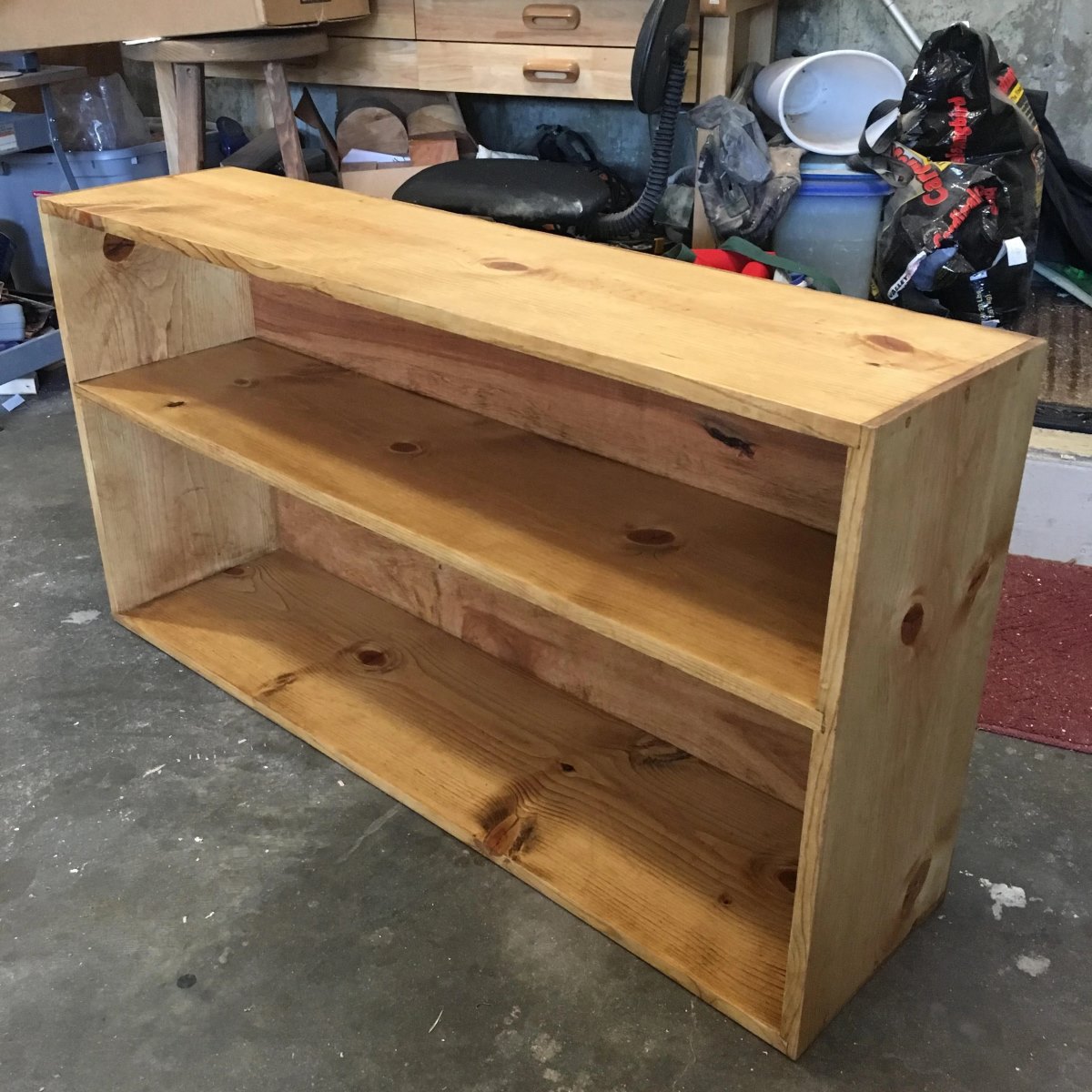


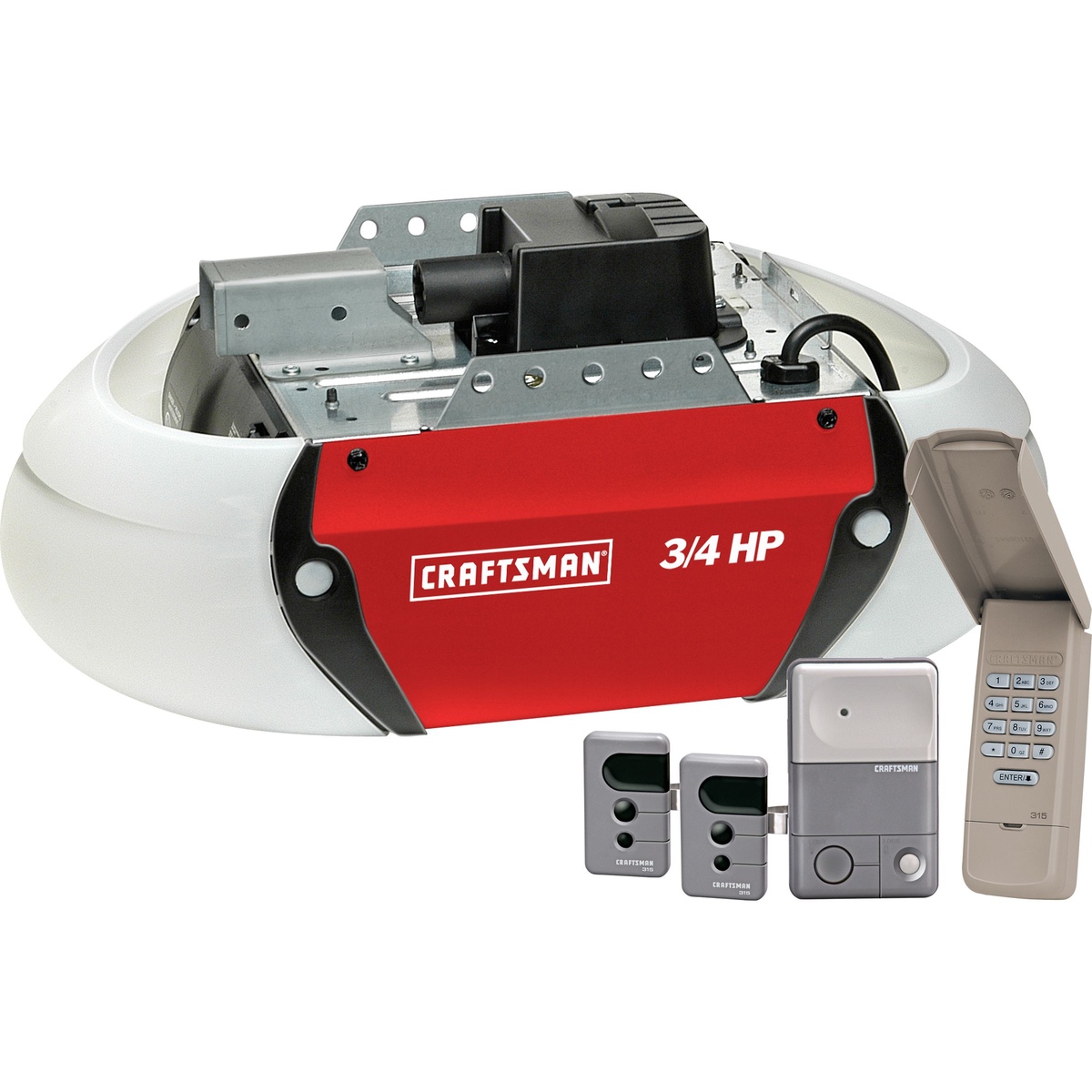
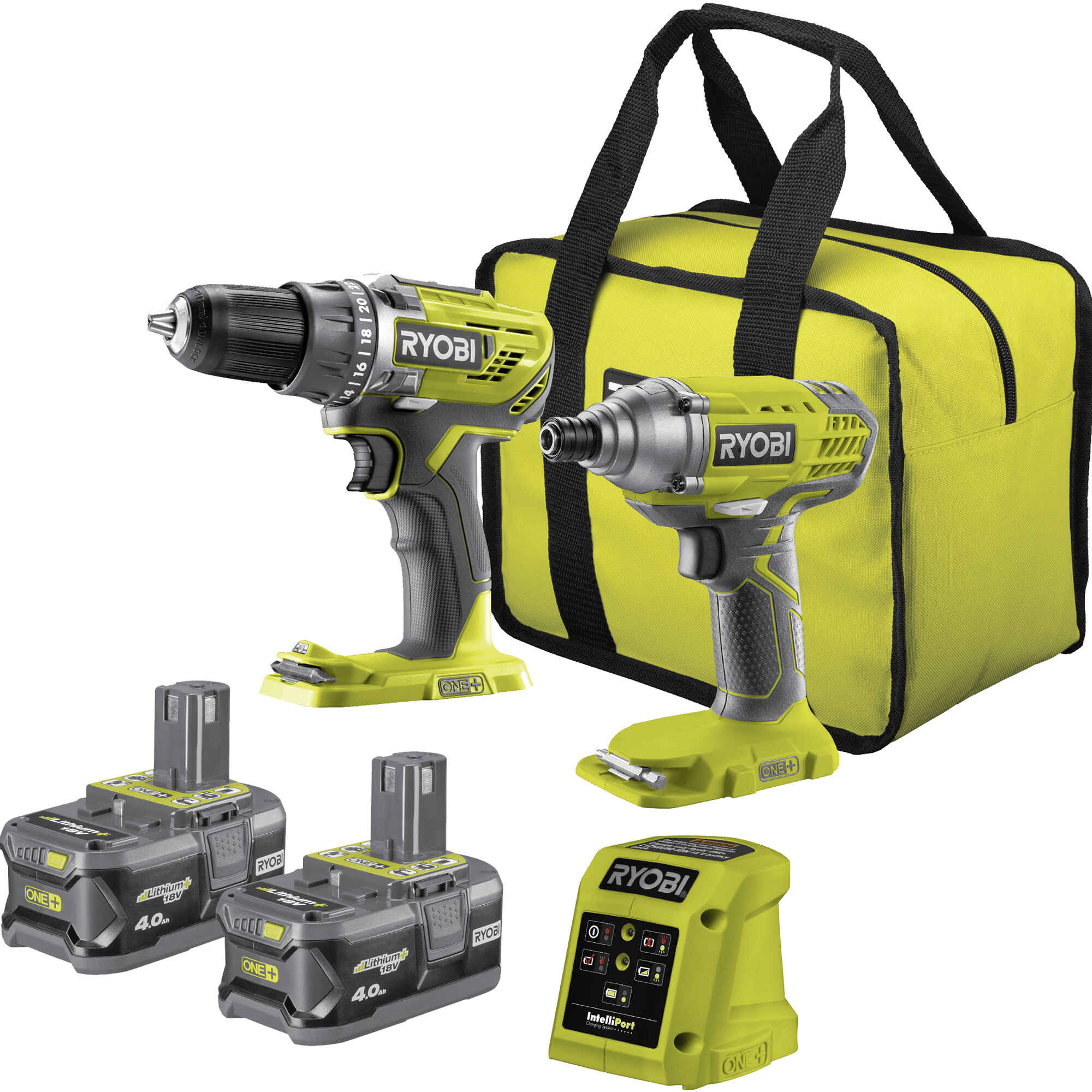
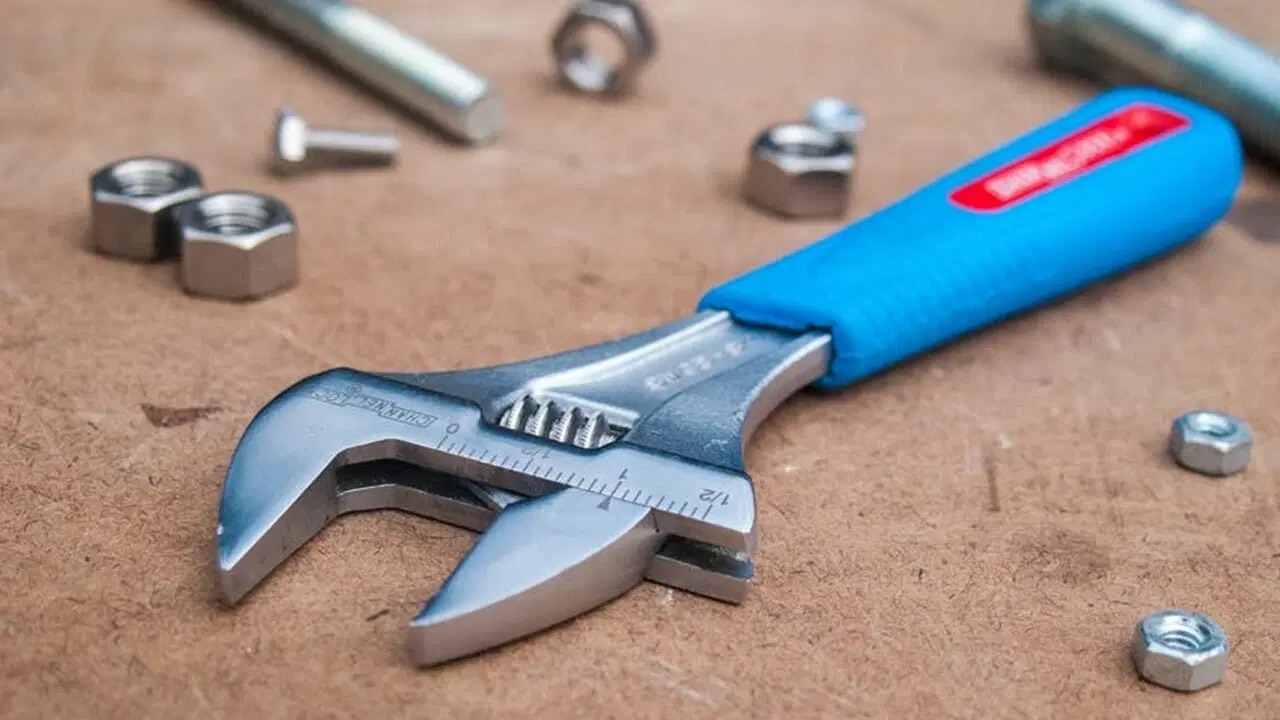







0 thoughts on “What Woodworking Router Should I Buy”